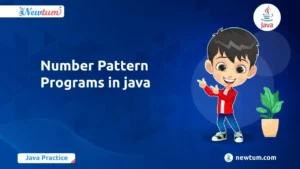Have you ever played word games like Scrabble or tried to solve puzzles where you need to rearrange letters to form new words? You’ve encountered anagrams! In this blog, we’ll explore anagrams, what they are, and how to work with them using Java programming.
What is Anagram?
An anagram is a word or phrase formed by rearranging the letters of another word or phrase to create a new one, using all the original letters exactly once. Anagrams are a form of wordplay or word puzzle in which the letters are shuffled to create new words or phrases that often have different meanings or connotations. Anagrams are commonly used in word games, puzzles, and cryptography, and they can be a fun way to explore the creative possibilities of language. For example, “listen” and “silent” are anagrams of each other because they use the same letters but in different order.
The Java Toolbox
Java is a powerful language for working with strings, which makes it great for anagrams. Java provides handy tools and methods for handling text data.
Java Code to Determine Whether Two Strings are Anagrams
Learn How to Generate Random Numbers in Javascript, Now!
// Anagram in Java
import java.io.*;
import java.util.Arrays;
import java.util.Collections;
public class AnagramEx {
static boolean areAnagram(char[] str1, char[] str2)
{
// Get lengths of both strings
int n1 = str1.length;
int n2 = str2.length;
// If length of both strings is not same,then they cannot be anagram
if (n1 != n2)
return false;
// Sort both strings
Arrays.sort(str1);
Arrays.sort(str2);
// Compare sorted strings
for (int i = 0; i < n1; i++)
if (str1[i] != str2[i])
return false;
return true;
}
/* Driver Code*/
public static void main(String args[])
{
char str1[] = { 'n', 'o', 'w' };
char str2[] = { 'o', 'w', 'n' };
if (areAnagram(str1, str2))
System.out.println("The two strings are anagram of each other");
else
System.out.println("The two strings are not anagram of each other");
}
}
Explanation of the Code:
1. Import Statements:
The code imports necessary Java libraries for input/output (`java.io.*`), working with arrays (`java.util.Arrays`), and collections (`java.util.Collections`). However, the `Collections` import is not used in the code.
2. areAnagram Method:
– This method takes two character arrays (`str1` and `str2`) as input parameters and returns a boolean value (`true` if they are anagrams, `false` otherwise).
– It first checks if the lengths of both input strings are the same. If they have different lengths, they cannot be anagrams, so it returns `false`.
– Next, it sorts both character arrays using `Arrays.sort()`. Sorting ensures that if two strings are anagrams, their sorted versions will be identical.
– Finally, it compares the sorted arrays character by character. If any characters differ, it returns `false`. If all characters match, it returns `true`.
3. main Method:
– The `main` method is the entry point of the program.
– It defines two character arrays `str1` and `str2`, representing the strings to be checked for anagrams.
– It calls the `areAnagram` method with these two arrays and prints the result accordingly.
Space Complexity:
– The code’s space complexity is primarily determined by the space required to store the character arrays `str1` and `str2`, which have lengths `n1` and `n2`, respectively.
– Sorting the arrays in-place using `Arrays.sort()` doesn’t significantly impact the overall space complexity, as it operates on the existing arrays without creating new ones.
– Therefore, the space complexity of this code is O(max(n1, n2)), where n1 and n2 are the lengths of the input strings.
Check out Java Interview Questions and Answers, Now!
Algorithm Complexity:
– The algorithm sorts both input strings, which requires O(n*log(n)) time complexity, where n is the length of the longer input string.
– The subsequent character-by-character comparison requires O(n) time in the worst case.
– Thus, the overall time complexity of the code is O(n*log(n)), where n is the length of the longer input string.
Output:
The two strings are anagram of each otherReal-World Applications:
1. Cryptography: Historically, people have used anagrams in cryptography as a form of code or cipher. Rearranging letters in a systematic way can obscure the original message, making it a fun and creative way to encrypt information.
2. Text Analysis: Anagrams can use in the field of natural language processing and text mining to analyze and identify patterns in text. For example, detecting anagrams in a large corpus of text can reveal hidden relationships between words or phrases.
3. Word Games and Puzzles: Anagrams are a staple in word games and puzzles, such as Scrabble and crossword puzzles. Players often need to rearrange letters to form valid words or discover hidden words within a set of letters.
4. Linguistics Research: Linguists and language researchers use anagrams to study language evolution, word formations, and linguistic phenomena. Anagram analysis can provide insights into the structure of languages.
Also, learn about Multiply Two Matrices in Java,Now!
Challenges and Optimizations:
1. Efficiency for Large Datasets: When dealing with large words or phrases, traditional anagram detection methods that involve sorting or frequency counting may become inefficient. We need to optimize to handle the computational load efficiently.
2. Space Complexity: Storing and comparing large datasets of words or phrases can consume significant memory. Optimizing data structures and algorithms to reduce space complexity is crucial.
3. Scalability: Anagrams can be applied to extensive datasets, such as analyzing a large volume of text. Ensuring that the anagram detection algorithms scale well with increasing data size is a challenge.
4. Multilingual Anagrams: Anagram challenges become even more complex when dealing with multilingual texts. Handling characters from different scripts and languages requires careful consideration.
5. Finding Longer Anagrams: Detecting longer anagrams (phrases or sentences) can be computationally intensive. To tackle this challenge efficiently, you may need advanced algorithms like dynamic programming.
6. Partial Anagrams: Detecting partial anagrams, where only a subset of characters needs to be rearranged, adds complexity. Solving such puzzles may require specialized algorithms.
7. Parallel Processing: To improve performance, parallel processing techniques can be employed to detect anagrams more quickly, especially when working with vast datasets.
8. Data Preprocessing: Cleaning and preprocessing input data can impact the efficiency of anagram detection. Removing irrelevant characters, converting text to lowercase, and filtering out common words can optimize the process.
In conclusion, anagrams in Java offer a fascinating journey into wordplay and problem-solving. By leveraging the robust Java toolbox and understanding the intricacies of anagram detection, we unlock a world of creativity and practicality. From cryptography to text analysis, anagrams find their place, making language a playground for exploration and innovation.
We hope that our blog on ‘Anagram in Java’ provide useful insight and help you to learn more about Java. For more information on programming languages, please visit our Newtum website. Happy coding!
FAQ
An anagram in Java is a word or phrase formed by rearranging the letters of another word or phrase to create a new one, using all the original letters exactly once.
Java provides powerful string manipulation capabilities, including sorting, character arrays, and collections like `HashMap` for counting character frequencies.
Algorithm complexity, often denoted as time complexity, measures the computational effort required by an algorithm. Sorting-based methods have a complexity of O(n*log(n)).
Anagram detection has applications in cryptography, text analysis, word games, linguistics research, and more.
Challenges include optimizing for large datasets, handling multilingual anagrams, scaling algorithms, and efficiently finding longer anagrams.
Optimizations involve choosing the right algorithm, using data preprocessing, employing parallel processing, and considering space-saving techniques.



